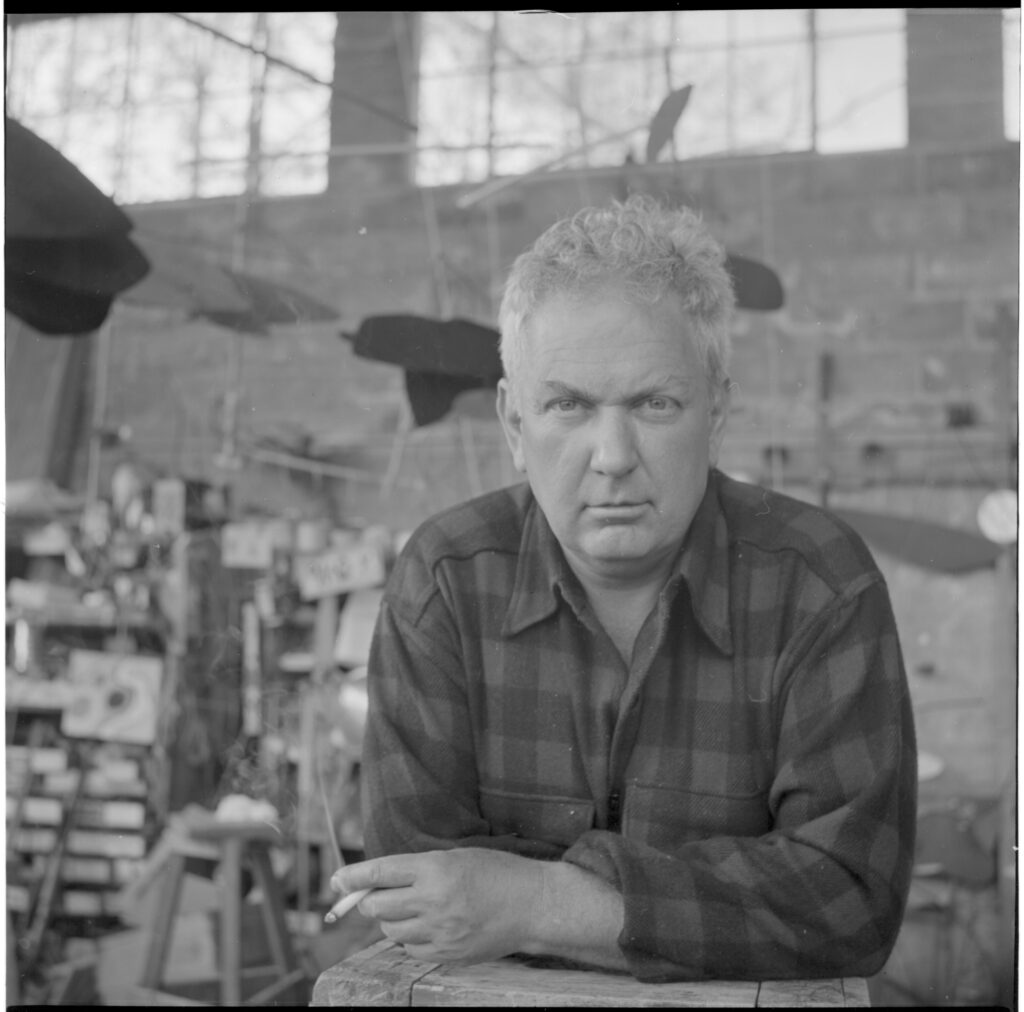Alexander Calder
American
1898, Lawnton, Pennsylvania
1976, New York, New York

American
1898, Lawnton, Pennsylvania
1976, New York, New York

Alexander Calder is best known for his hanging mobiles. Born into a family of artists, Calder committed to a career in art in his mid-20s and traveled frequently in the subsequent years between New York and Paris, where he befriended members of the international avant-garde.
Calder’s interest in movement appeared early in his figurative wire sculptures, which have a mechanical sensibility. In 1931 Calder gave form to an entirely new type of abstract art: the mobile. Some of these objects operated with motors, but his real breakthrough came with his creation of hanging mobiles. They consist of abstract shapes connected by wires and move freely with the air currents in a room.
In addition to his mobiles and stabiles, or stationary objects, Calder worked across many media, including painting, jewelry, drawing, printmaking, textiles, and domestic objects, and he undertook commissions for large-scale public artworks around the world.
Please note that artwork locations are subject to change, and not all works are on view at all times. If you are planning a visit to SFMOMA to see a specific work of art, we suggest you contact us at collections@sfmoma.org to confirm it will be on view.
Only a portion of SFMOMA's collection is currently online, and the information presented here is subject to revision. Please contact us at collections@sfmoma.org to verify collection holdings and artwork information. If you are interested in receiving a high resolution image of an artwork for educational, scholarly, or publication purposes, please contact us at copyright@sfmoma.org.
This resource is for educational use and its contents may not be reproduced without permission. Please review our Terms of Use for more information.